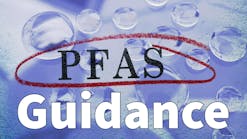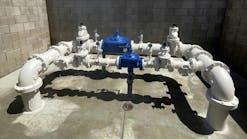PETRICHOR—THE FRESH, MINERAL-LADEN SCENT that emerges as rain comes in contact with the earth—is my all-time favorite smell. And for the first time in years, the California air is filled with it.
As I write this, the state is receiving the third in a string of winter storms. Creeks and rivers are flowing again, and have swelled to flood-level heights. Frogs are revived. Puddles once again offer shimmering reflections. And it seems the rain has not only quenched the earth, it’s invigorated our spirits. I, for one, am inhaling deeply.
The word “petrichor,” was coined by Australian researchers I. J. Bear and R. G. Thomas in 1964 to describe the earthy fragrance for a scientific article published in Nature. The etymology is from the Greek “petra,” meaning “stone,” and “ichor,” the blood of the Gods. While Bear and Thomas may have first defined the term in 1964, only recently have two MIT scientists uncovered the mechanism behind the phenomenon.
Cullen R. Buie, an assistant professor of mechanical engineering at MIT and postdoc Youngsoo Joung used high-speed cameras to observe the split-second sequence of events that takes place when rain comes in contact with the ground.
The researchers discovered that when a raindrop hits a porous surface, it traps tiny pockets of air. These bubbles speed upward and burst at the drop’s surface, releasing microscopic particles called aerosols into the air. Depending on the speed of the droplet and the properties of the soil, a cloud of hundreds of aerosol droplets can fill the air, delivering the aromatic compounds to our noses.
Globally, petrichor’s connotations are overwhelmingly positive, associated with the earth’s fertility, drought relief, and life itself. The reality is that more than one billion people lack access to clean water on our planet today. In the coming years, as populations grow and climate change heightens the uncertainty of water availability, water scarcity is expected to increase. Climatologists predict extensive periods of drought, warmer temperatures, and more frequent and powerful storms. In the future, petrichor’s flinty dampness may only on rare occasion reach our senses.
Climate change calls for water professionals, government leaders, and world citizens to optimize water resource management. Technology supports this awareness. With the help of digital tools and the intelligence they provide, today we’re able to observe our water matrix, question our consumption patterns, and determine actionable long-term solutions to many of our hydrologic concerns. In this issue of Water Efficiency we discuss some of the practices and innovative technologies that promote resourceful water usage and conservation.
In “Do More with Less” we look at ways in which water utilities can use supervisory control and data acquisition (SCADA) architectures as an efficiency tool. From forecasting the effects of valve closure, to managing pump activity, and orchestrating the operation of disparate lift stations, SCADA supports resource management by helping utilities conserve both water and energy.
Nitrogen helps nourish crops that feed our nation. But it also finds its way into ground water and waterways. In “Smart Irrigation Reduces Nitrogen Leaching” we get an up close look at the sensor technologies that support precise nitrogen application and water-saving irrigation techniques, as well as drainage practices to mitigate potentially harmful leaching.
“Global Reach, Local Impact” offers ways to conserve resources such as wastewater reclamation, water reuse, desalination, and treatment technologies that improve efficiency. Water scarcity is a global issue that makes it imperative for water consumers and policy makers to streamline ourusage, wisely reuse resources, and optimize our water efficiency.
An estimated 1 trillion gallons of water is lost in the US each year. In “Counting the Drops” we explore several approaches to leak detection—both direct and indirect—as well as water auditing methods to conserve valuable resources and minimize non-revenue water loss.
As rains return moisture to California’s parched landscape and bring relief to our reservoirs, the scent of damp earth reminds us of the importance of water conservation. It prompts us to pause, inhale deeply, and enjoy the fragrant return of dewdrops, verdant hillsides, and agricultural abundance. Thus, for many of us, petrichor is the scent of gratitude.
What techniques and technologies support your organization’s water efficiency efforts?



